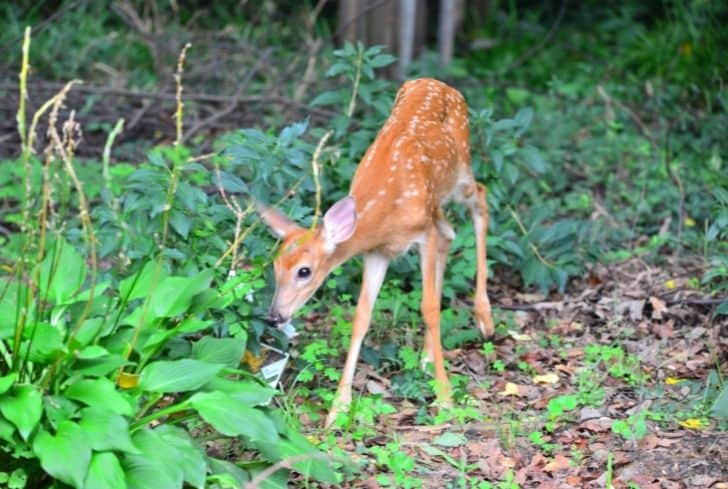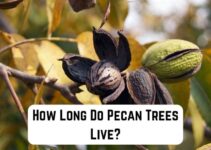Hostas are beautiful flowers with bright blooms and mild fragrance. Thanks to their appeal and indelible charm, they are often used by gardeners far and wide. These plants are moderately tall and belong to the same family/genus as lilies.
But how do you protect your beloved bunch from deer? Do deer even prey on hostas? In case they do, what are some definitive ways to get rid of them?
Well, these are some of the questions we are about to explore in this article. So, if you are a gardening enthusiast who is keen on protecting your beloved blooms, here are some of the things you need to know.
Do Deer Eat Hostas?
Unfortunately, deer indeed eat hostas. In most scenarios, they tend to pull out the hosta stem and then munch on the leaves, flowers, and twigs. Owing to their widespread menace, it is critical to protect your plants by employing the right guidelines.
Are Hostas Deer Resistant?
Unfortunately, there’s nothing called ‘deer resistant hostas’ because deer will ultimately eat any plant when they are hungry and lacking in adequate food sources. While you can always implement the right strategies and methods to ward off deer, there’s no permanent solution to this.
Do Deer Eat Hostas Leaves?
Yes! The foliage of hostas is one of the top favorites of most deer. As previously mentioned, they tend to weed out the plant from the ground and then feast on its leaves and twigs.
Why Do Deer Like Hostas?
Deer like hostas because they have dense foliage and are easy to weed out. Since hostas do not have any strong fragrances either, most deer are almost naturally attracted to them.
Will Hostas Come Back After Deer Eat Them?
Yes! Luckily for most of us, hostas will come back even if deer munch on them. In case your plant has recently undergone a deer attack, cut it right back on the ground. In the next few months, you will find the hosta producing a bunch of small leaves.
However, in most cases, you are required to wait till the upcoming spring for the plant to bloom and grow leaves once again. We recommend employing the best methods to protect your hostas, especially during the winter months. Consider using straw or mulch as a covering for good results.
How to Keep Deer From Eating Hostas?
If you’re worried about deer gorging on your favorite Hostas, you are not alone! Thousands of homeowners face the same problem in trying to keep off deer from their property. It is worth noting here that deer are among those few animals that prefer to munch on food during nighttime.
So, if you find your hostas damaged most mornings, there’s a high possibility that deer are the major culprit. You will notice that unlike other rodents like squirrels and rabbits, deer do not merely nibble on the foliage, nor do they leave a clean cut at 30 or 45 degrees. Deer tend to be more predatory. They simply pull the plant out, twist the twigs, and munch on them.
The foliage is left with ragged parts and shredded bits thanks to the specific and accurate pattern of deer teeth.
In case the signs match and you suspect deer of invading your property, here are a few guidelines to keep them in check.
1. Limit their Entry
One of the easiest ways to deal with this issue is by completely limiting deer access in your garden. While the entire project may not come cheap, it is certainly an excellent way to keep deer from coming. Since most deer can jump up really high, consider getting large and tall fences with a height of at least 10 to 12 feet.
If getting a high fence isn’t a good idea for your garden, consider getting outward fences of six to eight inches in height. However, while positioning these fences, make sure they are set at a 60-degree angle. The position of the fence alone will go a long way in confusing your deer.
In addition to fencing or as an alternate option, you can always consider covering your flowers with nets or floaters. However, this needs to be done daily (once at night and once in the morning). You should also invest in quality nets with secured fabric at the edges. This way, you can be completely sure that the wind won’t end up removing the cover.
2. Use Motion Sensitive Devices
Motion-sensitive lights go a long way in protecting your hostas from potential harm. They also play a big role in helping you choose between a tall and short fence. These lights will be automatically turned on every time a deer ventures around your garden. The light alone will scare off the deer and keep them away.
If you’re looking to settle for low-tech, try wind chimes. A quintessentially classic outdoor accent, they often scare deer and keep them from returning. However, some deer may get comfortable with the sound of the chimes which will reduce their fear over time. That is why it is best to team up these chimes with something else.
In addition to the mentioned options, you can also try sensor equipment. Most of them have light and sound well-installed and others come with sprinklers that frighten and scare deer. You will find these devices in night and day modes, making way for 24*7 protection.
Installing them is equally simple and since the devices are powered by AI, they will only sprinkle water or start the alarm when they spot an animal.
3. Confuse Them
The easiest way to confuse a deer is by using the right repellant. Yes! Repellants aren’t a favorite of deer and depending on the kind of product you are using; they might end up having a deep and relevant impact on the deer’s olfactory and tactile abilities.
Typically, you spray these repellants in proximity to the flowers and you keep doing that until your garden is completely free of deer. You might have to re-apply for the products at least once every two weeks. In case it rained, or you irrigated the garden soil, then to you might have to reapply the solution.
Even though you will find deer repellant in all shapes, sizes, and types, most of them come with the common ingredients of animal protein, pungent odor inducing agents like old eggs, peels or garlic, green/red chilis, and more. According to the U.S Department of Agriculture, repellants with sulfurous smells are deemed highly effective than others.
4. Frighten the Deer
While trying to get rid of deer from your property, you might have to perform trial and error on a couple of methods. However, the tactics should always change because you don’t want the deer to be comfortable with a specific repellant. For best results, mix and match or try one method with something entirely different and unconventional.
For instance, even if you are using deer repellant sprays, we recommend trying out a bunch of visual deterrents. These can be anything from pie plates that you’ve hung to a post, or a sprinkler powered by motion activation that splashes water on the deer, every time they cross the field.
If all fails, try getting a dog to patrol around the garden. This way, every time the deer will try to cross the boundary, they will be shouted at by the dog. In most cases, this act alone will be enough to scare the deer off and since deer take their fears extremely seriously, there’s a high chance that they won’t visit your property anytime soon.
5. Plant Them Right Next Door
Deer tend to be quite skittish. These animals are constantly alert and will immediately flee the moment they feel uncomfortable. Due to these traits, they won’t generally come near buildings or other structures where people ‘actually’ reside. In case they end up collecting their courage and venturing to your home, either you or any other family member may spot them in trying to munch on your plants.
The moment you spot them, immediately start banging heavily on your windows. If it is convenient, try to scream or rush back to your garden the moment you find a deer. Either of these techniques will end up scaring the deer. Because hostas thrive well in shade, you will also have peace of mind knowing that you aren’t hindering their growth in any way.
This method, however, has two drawbacks. First, the deer might choose to venture into your garden when you are sleeping (late night or early morning). Next, they may also come to visit you when you’re out running an errand.
That is why, even if you are planting hostas at home, we recommend using an additional preventative technique to have complete peace of mind, even when you are not at home.
Hostas are stunning flowers that can light up every garden. So, if you have them at home, make sure you protect them well so that they get the due chance to grow and thrive. Follow our guidelines for best results and continue to try one or more measures simultaneously for greater impact. Once you live by these guidelines, your hostas will be well protected and safe during the coming days.






